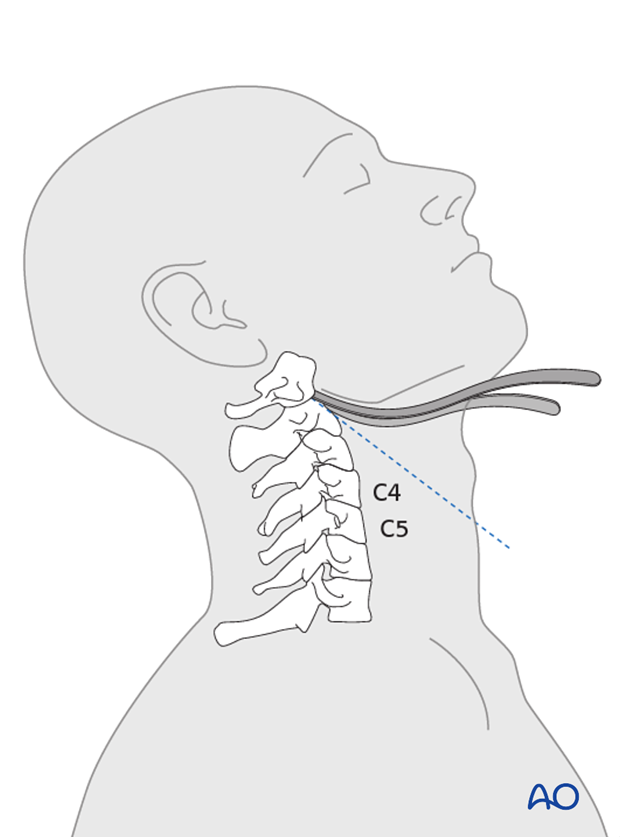Anterior C1–C2 transarticular screw insertion
1. Introduction
The advantage of using an anterior transarticular screw is that it requires less muscle dissection than a posterior transarticular screw. The disadvantage is that, in order to perform a fusion, a transoral approach to decorticate the C1–C2 joint is usually necessary. Because of this, this is the least popular C1–C2 fixation technique.

2. Preoperative evaluation
A preoperative CT image must be evaluated to determine if it is possible to use this screw.
3. Approach
A standard Smith-Robinson approach to the cervical spine is utilized for the insertion of anterior transarticular C1–C2 screws.

The incision is made as if approaching a C4–C5 anterior cervical discectomy and fusion. The dissection is carried out cranially until C2 is exposed. A curved Deaver retractor is helpful.

4. Screw entry point
The starting hole for the screw is 7–8 mm distal to the C1–C2 joint.
It is 3–5 mm lateral to the medial border of the C1–C2 joint.

5. Screw trajectory
The screw is directed approximately 30° laterally and 30° posteriorly across the joint.

6. Screw insertion
Drill, tap, measure, and insert the screw under fluoroscopic guidance. The screw should not perforate the dorsal cortex of C1, nor should it violate the occipital cervical joint.













